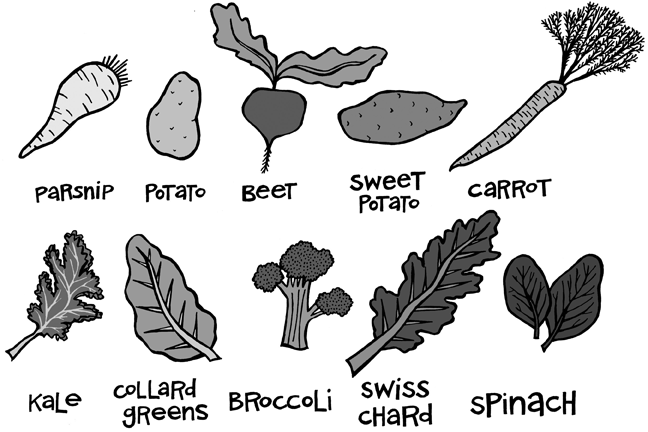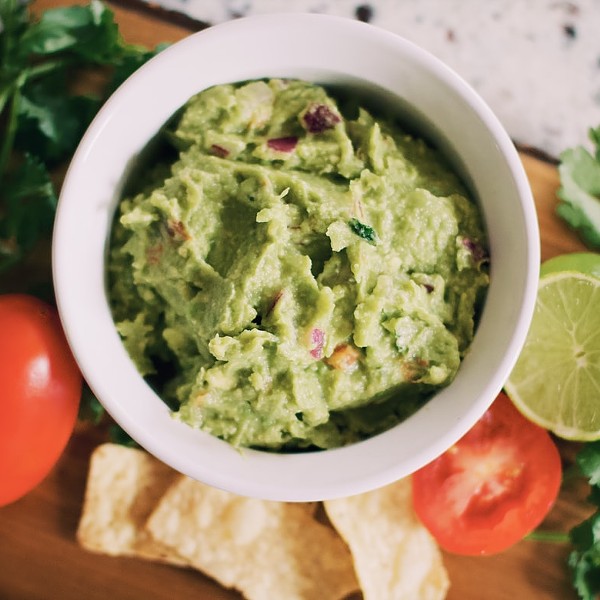Playing with Portions
Wilson stresses that it’s important to keep familiar foods on your menu, while adding higher fiber vegetables. She suggests, “Double the size of less calorie-dense foods (vegetables) and reduce your portion of higher-calorie foods (i.e., everything else). For example, take three servings of spinach—fill half of your plate—a small baked potato, and a third less of your usual steak serving. The plate is still full, but there’s 250 fewer calories on it. By changing portions and adding foods, you can manage the quantities of ingredients that are calorie-dense.”
Quick-fire Challenge
Here’s a test. It’s lunchtime. You reach for a grilled cheese sandwich and chicken noodle soup. Then, like a bolt of lightning, it hits you, and you see the colors about to settle on your plate: white and tan (and maybe pale orange). Quickly, you shove the chicken soup back in the cabinet and tug at the can of hearty vegetable way in the back. Then you make a mad dash for the freezer, pull out a handful of frozen spinach, and plop it in your soup cooking on the stove. “Wait! Wait! The sandwich!” you exclaim. You know you can brighten up the pasty-white duo. You slice some gorgeous purple onion and nestle it between the Colby. You are on a roll. You throw open the fridge and frantically sort through bottles and jars…ah! There, behind the mustard and capers, is the jar of roasted red peppers from that time you made pizza. You open the lid, take a sniff, and decide it’s still good. Voila! You have created a masterpiece. From blah to ahhh in two minutes flat. You sit down to regard your creation. It’s lovely, satisfying, and delicious. You vow to do it again!
Find your Balance
Balance comes in many shapes and sizes. It can be a balance of exercise versus movie watching, pasta versus broiled chicken and greens, snack versus meal, and, of course, nutritious food versus Green and Black Organic chocolate. It’s not everyone who can be a high wire artist, for whom balance is innate. For the rest of us, it takes a bit of mindfulness to get the nourishment we need, the treats we want, and the wisdom to know the difference.
Planning will get you through the day in food-choice balance. Plan for meals to be a colorful balance of vegetables, whole grains, fruits, proteins, and healthy fats. Balance a bagel-with-cream-cheese breakfast with baked tilapia, lentil soup, and cabbage for dinner. Strategize your weekly food choices, too. If you know you have a party on Saturday, and you’ll want to try half of the desserts, plan to limit your sweet indulgences the week before.
Wilson’s personal game plan for balance at parties and special occasions is to eat what is special for the season. She says, “I look at the holiday buffet and think about which foods I will only get at this time of year. So I have the eggnog and sweet potato casserole, and I don’t eat the typical chips and dips. If it’s my mother’s almond crescent cookies I’ll eat it, but not a plain cookie that I could get at any time of the year.”
So pull out a cookbook, invite over some pals, and get creative with the greens of Lacinato kale and the oranges of kubocha squash. Don’t let seasonal habits take a toll on your health. Get outside in the sunshine for a few minutes each day. Fill up with nourishing food and nourishing activities. Let the seasonal changes guide your eating toward appropriate choices. And remember: There’s wisdom in those cravings.
Ilyse Simon is a registered and certified dietician who counsels whole foods nutrition in uptown Kingston. She can be found during much of winter clutching a warm mug of tea.


















